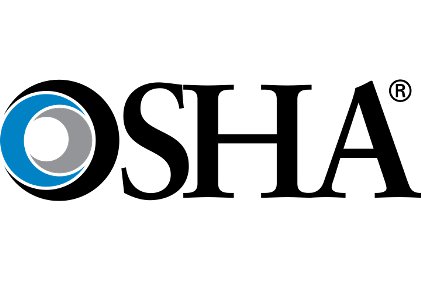 Remarks made by OSHA chief Dr. David Michaels to members of the National Advisory Committee on Occupational Safety and Health (NACOSH) about the agency's initiative to protect temporary workers.
Remarks made by OSHA chief Dr. David Michaels to members of the National Advisory Committee on Occupational Safety and Health (NACOSH) about the agency's initiative to protect temporary workers.
The important issue that I will discuss today is the protection of the health and safety of temporary workers. I look forward to hearing your thoughts and recommendations.
In recent months, we have received many reports of temporary workers suffering fatal injuries — some during their first days on the job.
The people behind the stories
One of our most recent high-profile enforcement cases was with Bacardi Bottling Corp. following the death of a 21-year-old temporary worker. LAWRENCE DAQUAN "DAY" DAVIS was crushed to death on his very first day at work while he was cleaning up glass inside a palletizer at the Florida bottling facility. Our investigation found that he and his co-workers were never trained in the simple lockout/tagout procedures that would have saved his life.
Many of the workers who are killed in their first few days on the job are doing construction work — workers like 28-year-old ADRIEN ZAMORA, who fell 40 feet from a scaffold while restoring an 11-story building in New York. It was his first day on the job, and according to a source quoted by the New York Daily News, "...he took a chance he shouldn't have" while cleaning up materials on some scaffolding at the end of the day. He did not have fall protection in place at the time. He left behind a wife and two young daughters.
And last August, MARK RAINEY, a 60-year-old temporary worker at an Ohio roofing company, was working in the hot summer sun on top of a roof, throwing roofing material down into a dump truck. He started to become lethargic and confused, then lost consciousness, and died of heat stroke. He left behind two daughters, three grandchildren and a large extended family of aunts, uncles, and cousins. The Bureau of Labor Statistics found that thirty-one percent of all heat-related fatalities in 2011 were in construction.
On January 22, 2013, SAMIR STOREY began his first day as a temporary worker at Resolute Forest Products in Catawba, S.C., and was assigned to clean the inside of a tank. Local news reported that he was given a brief training video and a respirator to wear inside the tank, but that when an alarm sounded and liquid started pouring into the tank, only two of the three employees were able to escape. The news story reports that Samir was trapped inside the tank for hours after the liquid started pouring in.
The two leading factors
Not surprisingly, there is a growing body of research showing that temporary workers are at greater risk of workplace injury and illness than non-temps. The research points to a range of factors for the increased risk. The two leading factors, according to the literature, are:
1) lack of job information and safety training for temps increasingly employed in dangerous occupations, and
2) employer financial and performance incentives around workers' compensation and other benefits.
Given the enormous size of the temporary workforce and these reports of temporary workers being killed on the job, the data on increased injury rates, and our recent high-profile egregious fatality cases, OSHA has announced a concerted initiative to use enforcement, outreach and training to ensure that temporary workers are protected from workplace hazards.
As all of you are well aware, under the OSHA law, this nation's workers all have the right to safe working conditions, and employers have the duty to provide necessary safety and health training to all workers for workplace hazards.
Definition of temporary workers
The term "temporary help agency workers" is defined by BLS as workers who are paid by a temporary help agency, whether or not their job is temporary. For the purposes of OSHA's initiative, "temporary workers" are those supplied to a host employer and paid by a staffing agency. The Bureau of Labor Statistics has defined several terms encompassing workers in a contingent or temporary employment arrangement category; these include contingent workers, independent contractors, on-call workers, temporary help agency workers, and workers provided by contract firms.
As part of our initiative, OSHA has sent a memorandum to our Regional Administrators underscoring the importance of assessing whether employers who use temporary workers are complying with their responsibilities under the OSHA law.
OSHA inspectors have been informed of the importance of ensuring that employers who use temporary workers are complying with their responsibilities under the OSH Act; inspectors will code the information in their records to denote when temporary workers are exposed to safety and health violations; and our inspectors will assess whether temporary workers received required training in a language and vocabulary they could understand.
For example: A temporary worker was hired to work in a manufacturing facility. He was assigned to run a machine. When he was asked if he knew how to run the machine, he replied that he did — he was afraid to admit that he did not know how to run the machine and thought that he would be let go. Thirty minutes later his arm was severed and was not able to be reattached. When the compliance officers visited him at his home to interview him about the incident, there were several guitars hung up on the wall. The compliance officer asked who played guitar and the victim replied that he used to.
As to our enforcement: While the division and extent of responsibility between staffing agencies and host employers are dependent upon the specific facts of each case, staffing agencies and host employers are jointly responsible for maintaining a safe work environment for temporary workers — including, for example, ensuring that training, hazard communication, and recordkeeping requirements are fulfilled.
Both the temporary employer and the host employer will be cited if OSHA finds that both employers were responsible for the violative condition(s).
In addition to this enforcement initiative, the Agency is currently working with the American Staffing Association to present a webinar for their members that highlights employee rights and employer responsibilities.
The webinar will include important safety and health information for ASA members, along with identifying best practices for staffing agencies and client employers.
What OSHA needs from NACOSH
The Agency is looking at ways to increase awareness of safety and health concerns and issues in the temporary worker industry; and, with stakeholder input, develop effective best practices. Some early thinking on best practices include both the staffing agency and the host employer having safety and health programs and giving substantial, substantive orientations to newly placed temporary workers. Staffing agencies should perform on-site safety evaluations of the worksites and keep in regular contact with their placed employees to better identify potential.
Finally, here are the questions we have posed to NACOSH:
How to gather best practices from the employer and worker community that employers and staffing agencies can utilize to ensure safety and health of temporary workers? What are these some of these practices?
Are there additional outreach or compliance assistance efforts the OSHA can undertake to help address temporary worker safety and health issues? Are there additional groups or stakeholders that OSHA should involve as it develops strategies for addressing temporary worker safety and health issues?
What is the role of state governments in ensuring the safety and health of temporary workers?
Are there additional enforcement strategies for addressing safety and health issues associated with temporary workers?
Thank you again for your service in advising OSHA and the Department of Labor.



